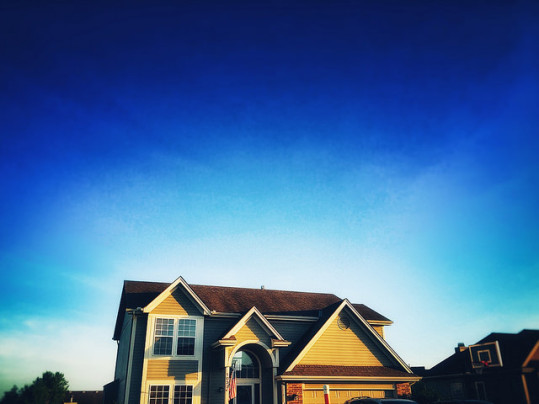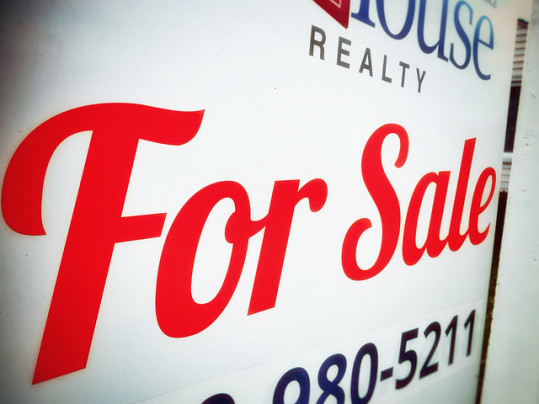When you have something to sell, half the battle is getting it in front of the people who’ll want to buy it. No matter what you’re selling – or how great it is – if no one knows it’s for sale, you’re not going to have much success. This, of course, is also true when you’re trying to sell a house. Even in a seller’s market, you’re going to get the best results if your home is accessible to as many home shoppers as possible. Proof of this is found in a recent analysis that looked at homes listed last year to determine the effectiveness of open houses. The analysis found that homes that had an open house within their first week on the market sold for more money and in fewer days than homes that didn’t have one at all. Of course, like everything else, the benefits of having an open house depended on location. And it’s also true that, in a lot of cases, homes that had open houses were the ones that were already attractive to home buyers. But, in the end, it makes sense. Getting more buyers to your home increases your odds of selling it quickly and having multiple offers. More here.
Archive for April 2019
The Where And Why Of Millennial Moves
Where and how you live has a lot to do with your job and money. After all, if money were no issue, you’d likely have a far different list of priorities when it came time to buy a house. But since most of us have to stick to a budget, we choose what type of house to look for and in which neighborhood based on our financial situation. That’s why it’s not surprising that a recent report on where millennials want to move found that the most popular areas for younger home buyers are those that offer good jobs and affordable homes. Naturally, these aren’t just priorities for millennials, as older buyers also want to live somewhere close to work that won’t break the bank. But because younger home shoppers are at the beginning of their careers and are often first-time home buyers, who have to come up with a down payment from scratch, this is especially true. That’s why the list of most popular areas for millennial buyers is made up of metro areas that have lower rates of unemployment, higher wages, and more homes in entry-level price ranges. More here.
How Long Will You Live In The House You Buy?
Choosing a house to buy takes a little bit of vision. After all, it’s easy to know what you want in a home today, but more difficult to know for sure what you’ll want years from now. Things change and your life will undoubtedly take some unexpected twists and turns. But just how long should you expect to live in the house you buy? Well, according to ATTOM Data Solutions’ Q1 2019 U.S. Home Sales Report, homeowners who sold in the first quarter of this year had lived in their home an average of 8.05 years. For comparison, that’s close to double what it was prior to the housing crash, when homeownership tenure averaged 4.21 years. In short, you’re likely going to spend close to a decade in the house you buy. That means, home buyers need to be thinking of, not only what they need from a house today, but also what they hope and plan for over the next several years. More here.
Mortgage Rate Increase Slows Demand
According to the Mortgage Bankers Association’s Weekly Applications Survey, average mortgage rates increased last week across all loan categories, including 30-year fixed-rate loans with both conforming and jumbo balances, loans backed by the Federal Housing Administration, and 15-year fixed-rate loans. The increase continues an upward trend that has caused some hesitation among borrowers, especially those looking to refinance. Michael Fratantoni, MBA’s senior vice president and chief economist, says rates have risen over the past three weeks due to fewer geopolitical concerns and a stronger U.S. economy. “Borrowing costs have recently drifted higher because of ebbing geopolitical concerns, as well as signs of strengthening in the U.S. economy, including the recent data pointing to robust retail sales,” Fratantoni said. “The strong economy and job market is keeping buyer interest high, but rising mortgage rates could add pressure to the budgets of some would-be buyers.” Still, though rates are up from where they were a few weeks ago, they remain low by historical standards and even from where they were at the end of last year. The MBA’s weekly survey has been conducted since 1990 and covers 75 percent of all retail residential mortgage applications. More here.
New Home Sales Improve For The 3rd Straight Month
New home sales increased 4.5 percent in March, beating economists’ expectations and hitting a 16-month high. The data, from the U.S. Census Bureau and the Department of Housing and Urban Development, is more evidence that home buying conditions are becoming more favorable just as buyer demand heats up for the season. The combination of a strong job market and low mortgage rates is encouraging buyers and helping steady a housing market that went through its ups-and-downs last year. And, since new-home sales gains build confidence in the market, three consecutive months of improvement may help spur builders to build even more new homes. As it is, growing inventory has led to a 9.7 percent drop in the median sales price of a new house, according to the March report. Overall, the latest new home sales data is encouraging, as the market for newly built homes plays a vital role in balancing supply and demand and keeping affordability conditions manageable for buyers. More here.
Half Of Homes Sold In Under A Month In March
The spring home sales season is underway and there’s no better proof than new numbers from the National Association of Realtors. According to their most recent existing home sales report, 47 percent of homes sold in March were on the market for less than a month. Additionally, the average number of days properties remained on the market was 36 days, down from 44 days the month before. That’s a significant drop and evidence that buyer demand is heating up and homes are selling more quickly. But, despite the fact that homes are selling faster, the overall sales numbers were down from February. Lawrence Yun, NAR’s chief economist, says that’s to be expected after the previous month’s sales surge. “It is not surprising to see a retreat after a powerful sales surge in the prior month,” Yun said. “Still, current sales activity is underperforming in relation to the strength in the job market. The impact of lower mortgage rates has not yet been fully realized.” In other words, though buyer demand may be increasing and homes are selling quickly, the market should be doing even better. One reason it’s not is low inventory. However, that may be changing. In fact, the number of homes available for sale in March was up 2.4 percent from last year. More here.
Realtors Say Buyers Want Green Homes
When it comes time to decide what type of home you want to buy, there’s a lot to go over. Beyond even the financial considerations, prospective home buyers have to make choices about the style of house, the size, number of rooms, the yard, storage, etc. Then they have to prioritize their wants and needs based on just how important they are and whether any of them are dealbreakers. Because there are so many factors, it’s no small thing when a sizable share of home buyers express an interest in the same feature. That’s why it’s significant that a recent survey of Realtors conducted by the National Association of Realtors found that 70 percent of participants said promoting energy efficiency in a home’s listing was somewhat or very valuable. In short, it means a lot of buyers agree that green and energy-efficient features are important to them. It’s no surprise why. Beyond the benefits to the environment or sustainability, energy efficiency means lower utility bills. And there are few home buyers who won’t like the sound of that. More here.







